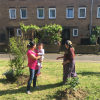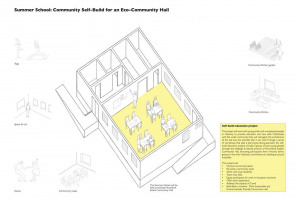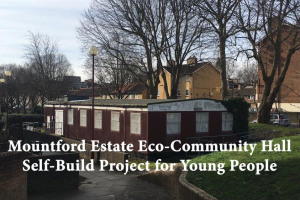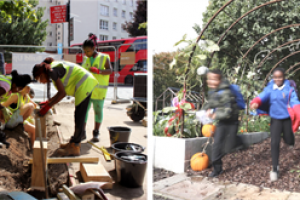Through a series of workshops that take a learning-by-doing approach, this self-build education project will take a group of local NEETS through the 1st phase of the redesign & rebuild process of Mountford Estate’s Community Hall, which is dilapidated & not fit for purpose. Led by Sahra Hersi, a black woman in architecture, the workshops will address issues of inequality & diversity within the architectural industry, actively seeking to recruit BAME participants. The workshops will cover architectural skills: research & consultation, prototyping & building & renewable energy technologies, providing the skills needed for the green economy. In consultation with local residents this will nurture local talent to rebuild a local asset; foster a stronger post-covid community while addressing the climate crisis; provide new skills for local young people whose employment prospects have been hardest hit the pandemic; redesign the community hall with the community so that it meets their needs.
What we'll deliver:
- Community event introducing the project to the local residents
- Stipend for participants so they can afford to attend workshops.
- Workshops taking young people from Stage 0 to Stage 4 of RIBA’s plan of works
- Workshops on community consultation
- Design and prototyping workshops
- Presentation to the local residents and providing opportunities to influence the final design.
- Renewable energy and sustainability workshops
- A publication with a step-by-step guide to the process so it can be used as a template for other community groups
- A collection of designs for the community hall produced by the participants
- Community event presenting the designs and consultation findings
Why it's a great idea:
Regeneration by the community for the community of a community asset will benefit the health& wellbeing of the local people & strengthen community cohesion. Effective community participation ensures more civic engagement & democratic outcomes. Benefits: Social equality: providing new affordable education opportunities for young Hackney NEETS, helping them learn new skills& increase their employability in an expected area of business growth. Research shows young people’s employment prospects will be hardest hit by Covid. Anti-racism & tackling structural inequality: recruiting black & minority ethnic young people & women in particular. The environment: designing sustainability into the architecture of the community hall. Building and construction account for 40% of global emissions, Building Operation accounts for 28%. This design will help the community reach its sustainability targets. Wider community through development of a step-by-step guide template to this Self-Build Project.
Steps to get it done:
- Community event – introducing the community to the project
- Stage 0 – Strategic Definition. Prepare Community Requirements.
- Stage 1 – Preparation and briefing. Community Approval.
- Stage 2 – Concept Design. Outcomes: Architectural concept approved by the community
- Stage 3 – Spatial Coordination. Outcomes: Architectural and engineering information Spatially Coordinated.
- Stage 4 – Technical Design Outcomes: All Design information required to manufacture and construct the project Completed
- Event to mark the initial design phase of the project where residents can view the design ideas
- Event will mark the completion of Stage 4, the finalised design which synthesises the design ideas.
- Publication of the process and the designs – this will mark the end of this phase of the project.
We have spoken with the Head of Resident Participation, Community Halls and Housing Services as well as Hackney Works to ensure the project meets Hackney's targets to tackle the impacts of Covid and is in line with Hackney’s commitment to anti-racism & tackling structural inequality. It will be led by Sahra Hersi, an MA graduate of architecture from the Royal College of Art, whose practice explores shared spaces, the public realm, collaboration and community engagement. The publication to document the process will be produced by Rose Nordin. Working locally the project will seek the support of local talent in the green energy and environmental sustainability sector. This project will include building into the design aspects that would minister to activities already existent on the estate such as gardening, through rainwater harvesting for example, while also creating a space that would make new activities that have not been actualised possible.



















